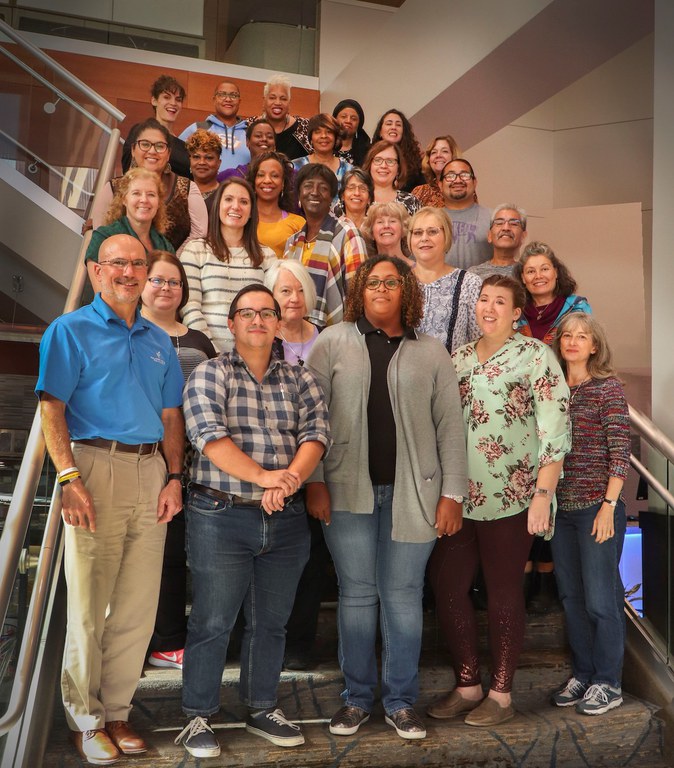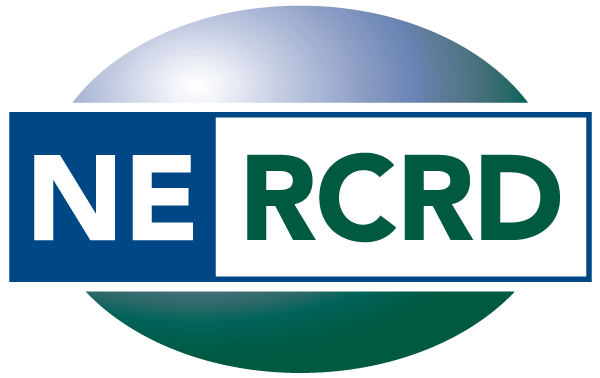
Catching up with Pennsylvania’s Coming Together for Racial Understanding Team
December 6, 2022
The team discussed how they adapted the Coming Together curriculum for Penn State Extension, the reach and impacts of their work thus far, and their plans for taking it to a wider audience.
Coming Together for Racial Understanding is an award-winning program of the national Cooperative Extension System (CES), designed to grow a community of Extension professionals well prepared to foster meaningful community conversations around race, thus leading to positive change. The program, which launched in 2018 under the leadership of the Southern Rural Development Center, is implemented first by training core state-level teams, who then provide training to a larger cohort within their home state’s CES system. In October 2019, Penn State’s Patreese Ingram, Justine Lindemann, and Cristy Schmidt attended the week-long Coming Together training as Pennsylvania’s core team. We caught up with them to find out more about their experience and plans going forward.
You participated in the Coming Together training in 2019, just a few months before the COVID-19 pandemic unfolded. How did the pandemic affect your plans?
Cristy Schmidt: After the training, we returned to Penn State with plans to hold an in-person two-day workshop retreat in April 2020. Of course, with the pandemic we had to reconsider how to move forward. Through monthly calls with other Coming Together teams from around the country, we developed a strategy for adapting the curriculum for virtual delivery. For example, we set it up to take place in six weekly two-hour sessions instead of the intensive two-day format. We also incorporated partner work into the curriculum, in which we grouped participants into working pairs, and had them meet in pairs prior to and throughout the course of the six-week workshop series. This provided an opportunity to make a personal connection and get to know somebody well despite the virtual format. It helped with building trust, which is critical to this work. We also enlisted the help of a working group of faculty, Extension educators, staff, and community members to pilot the curriculum and provide feedback before we facilitated the full workshop with our first cohort.
Q: You made other adaptations to the core Coming Together curriculum, particularly for internal use within Penn State Extension. Can you tell us more about this implementation?
Patreese Ingram: We developed the RA:CE Initiative, or Racial Action: Conversations in Extension, to be relevant to the racial and social dynamics of Pennsylvania and Penn State Extension. We added to the Coming Together curriculum to reflect the demographic makeup of Penn State Extension and how that compares to Pennsylvania as a whole and to the national Cooperative Extension System.
Justine Lindemann: The Coming Together curriculum focuses on racism and inequality at four levels: personal, interpersonal, cultural, and institutional. We’re making a big effort to put an emphasis not only on the personal and interpersonal but on structural and systemic inequities, especially as they relate to Extension. For example, we include a discussion section that dives deeper into the history of Extension and the ways in which Extension and the Land Grant system have contributed to or built upon a foundation of structural racism. Our hope is that when participants are at the point in the curriculum where they’re thinking about actions and recommendations, they’re including a structural and systemic perspective in terms of the types of things they propose.
Cristy Schmidt: Another unique aspect of our workshop is that we’re building a community of people who have participated, who are interested in staying connected and continuing the work together beyond the six-week training, and to hold each other accountable. The RA:CE Initiative is focused internally on Penn State Extension, so the focus is organizational change and cultural change within PSE.
Justine Lindemann: We’ve had a couple meetings where we invited everyone who has participated in the program. The goal is to offer opportunities for people to come back together and continue to talk and ask questions, like “Where are you now? How are things going? Has this [program] changed the way you work or the way you see your work?”
Q: You rolled out the internally focused RA:CE Initiative in March 2021. What’s the response been like so far?
Patreese: We are being intentional about reaching all ten of the geographic services areas that make up the Penn State Extension system. For each cohort we’ve targeted three of those areas, working through the respective Assistant Director of Programs and Business Operations Managers to share a letter of invitation. We’ve also extended invitations to people who we know personally. We’ve had four cohorts totaling 40 people complete the training and a fifth cohort with 10 participants is underway now.
Cristy: We’ve tried to create cohorts that were racially diverse and we’ve also tried to include an administrator and faculty members in addition to Extension educators. We’ve documented the makeup of our cohorts in a report we recently shared with our leadership.
Justine: We’ve also embedded evaluation surveys throughout the curriculum, in part to measure its impacts, and most participants have reported that their behavior and knowledge base has changed as a result of their participation. For example, most said they’ve become somewhat or extremely comfortable having dialogues across differences as a way to understand others’ viewpoints and experiences.
Q: The ultimate purpose of this work is to take the Coming Together dialogues into communities. What are your plans for doing that?
Cristy: Once we have more participation throughout all the areas of Penn State Extension, including faculty who work with Extension, then we’ll begin having conversations with past participants about how to bring the Coming Together dialogues into communities across the state. That will likely include expanding the group of educators and faculty who facilitate dialogues, as well as collaborating with community stakeholders to address their particular needs. We’re excited to begin having those conversations about what the next steps for the Coming Together program might look like in Pennsylvania.
Many thanks to the Pennsylvania Coming Together Team for taking the time to talk with us!
- Patreese Ingram is the Assistant Dean of Multicultural Affairs in Penn State’s College of Agricultural Sciences
- Justine Lindemann is an Assistant Professor of Community Development and Resilience in the Department of Agricultural Economics, Sociology and Education.
- Cristy Schmidt is an Applied Research Educator at the Center for Economic and Community Development, which is based in the Department of Agricultural Economics, Sociology and Education
For more information about the Coming Together initiative, visit: http://srdc.msstate.edu/civildialogue/index.html
